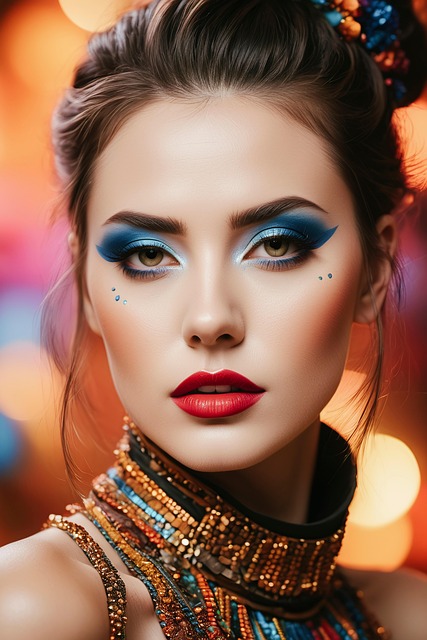TL;DR: Upper lip waxing can cause irritation, especially for those with sensitive skin, rosacea, or eczema. Before waxing, consult a dermatologist to identify triggers and reduce risks. Be aware of potential complications like redness, itching, and blisters. For sensitive skin, consider safer alternatives like creams or shaving.
“Considering facial waxing but worried about skin reactions? This guide explores when it’s best to avoid procedures like upper lip waxing. We delve into understanding skin sensitivity, common conditions that waxers should consider, and potential complications.
Learn why certain skin types are better suited for alternative hair removal methods, offering a safer approach to achieving a smooth look without the risk of irritation. Discover the signs to watch out for before attempting upper lip waxing.”
Understanding Skin Sensitivity and Irritation
Understanding skin sensitivity is crucial when considering procedures like upper lip waxing. Skin irritation can occur for a variety of reasons, and it’s essential to recognize your skin’s unique response to stress, products, or treatments. Certain conditions, such as rosacea or eczema, can make the skin more susceptible to inflammation and redness, especially in areas like the upper lip, which is delicate and often exposed.
If you have experienced sensitive skin reactions in the past, whether to topical products, sun exposure, or other beauty treatments, it’s wise to proceed with caution when considering upper lip waxing. Consulting a dermatologist can help identify specific triggers and recommend suitable alternatives or pre- and post-treatment care routines to minimize irritation.
When Upper Lip Waxing Can Lead to Complications
Upper lip waxing, while a common beauty procedure, can potentially lead to complications, especially for individuals with certain skin conditions. One of the primary concerns is irritant contact dermatitis, which may occur due to the sensitivity of the skin around the upper lip. The chemicals in wax or the process of heating and cooling can trigger an inflammatory response, resulting in redness, itching, and even blisters.
People with rosacea, a skin condition characterized by facial redness and broken blood vessels, should exercise caution before opting for upper lip waxing. The heat from the wax can exacerbate symptoms, leading to temporary or permanent dilation of the blood vessels. Additionally, those with existing scars or compromised skin barrier functions are at a higher risk of experiencing adverse reactions during waxing, potentially causing further irritation or even infection.
Common Skin Conditions to Consider Before Waxing
Before considering upper lip waxing or any other facial waxing procedure, it’s crucial to be aware of common skin conditions that may cause complications. Skin sensitivity is one such condition; individuals with highly sensitive skin might experience discomfort, redness, or even irritation post-waxing. This is especially true for areas like the upper lip, which has a thin and delicate skin surface.
Another concern is active acne or skin infections. Waxing can exacerbate these conditions, leading to increased inflammation and potential scarring. Individuals with eczema or rosacea should also exercise caution, as waxing may trigger flare-ups due to the sensitivity and dryness of their skin. Consulting a dermatologist before upper lip waxing is recommended, especially for those with existing skin concerns, to ensure a safe and healthy treatment experience.
Alternative Methods for Hair Removal: A Safer Approach?
Many people turn to facial waxing, particularly upper lip waxing, as a quick and effective hair removal method. However, it’s essential to consider alternative approaches, especially for those with specific skin conditions or concerns. Beyond the temporary nature of waxing, there are several safer alternatives that can be more suitable for sensitive skin areas like the upper lip.
One popular option is using creams or lotions designed for hair removal, which often contain ingredients like cream or sugar to dissolve hair. These methods are generally gentler and less irritating, making them ideal for individuals with acne-prone skin, rashes, or other skin sensitivities. Additionally, shaving, when done correctly with a fresh blade, can also be a safe and effective choice for some, offering a more long-lasting solution than waxing. Exploring these alternatives can help individuals maintain smooth skin while avoiding potential discomfort or irritation associated with facial waxing.
While upper lip waxing can be a popular beauty routine, it’s crucial to recognize when it might not be suitable for your skin. Understanding skin sensitivity and common conditions like rosacea or eczema is essential before attempting any waxing treatments, especially on the face. If you have a history of severe irritation or skin reactions, exploring alternative hair removal methods could be a safer bet. By considering these factors, you can make an informed decision to avoid potential complications associated with upper lip waxing.
